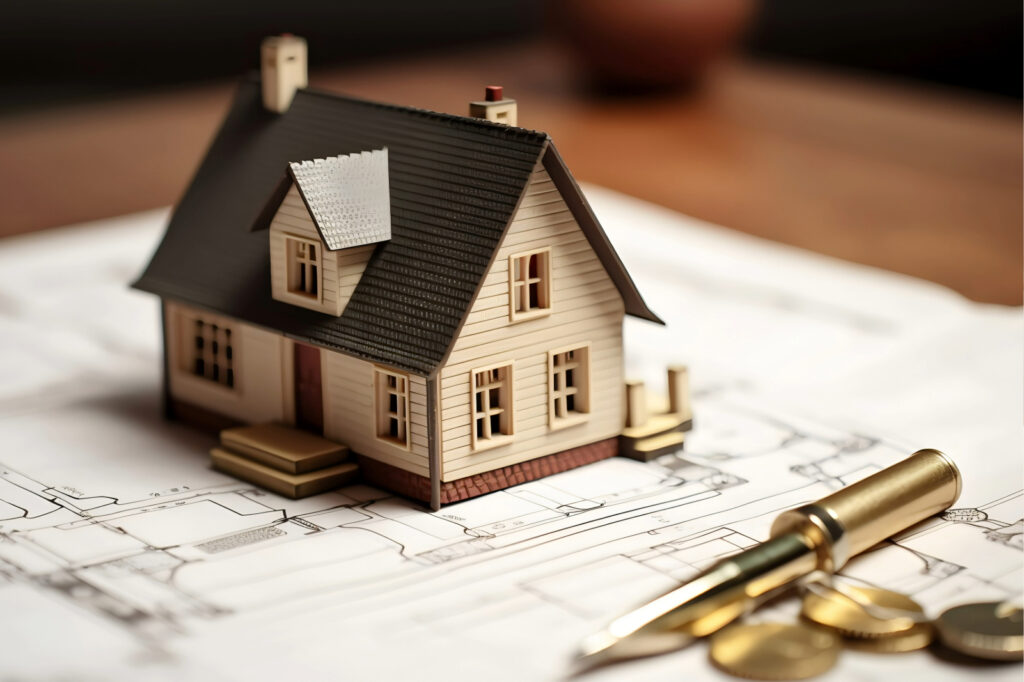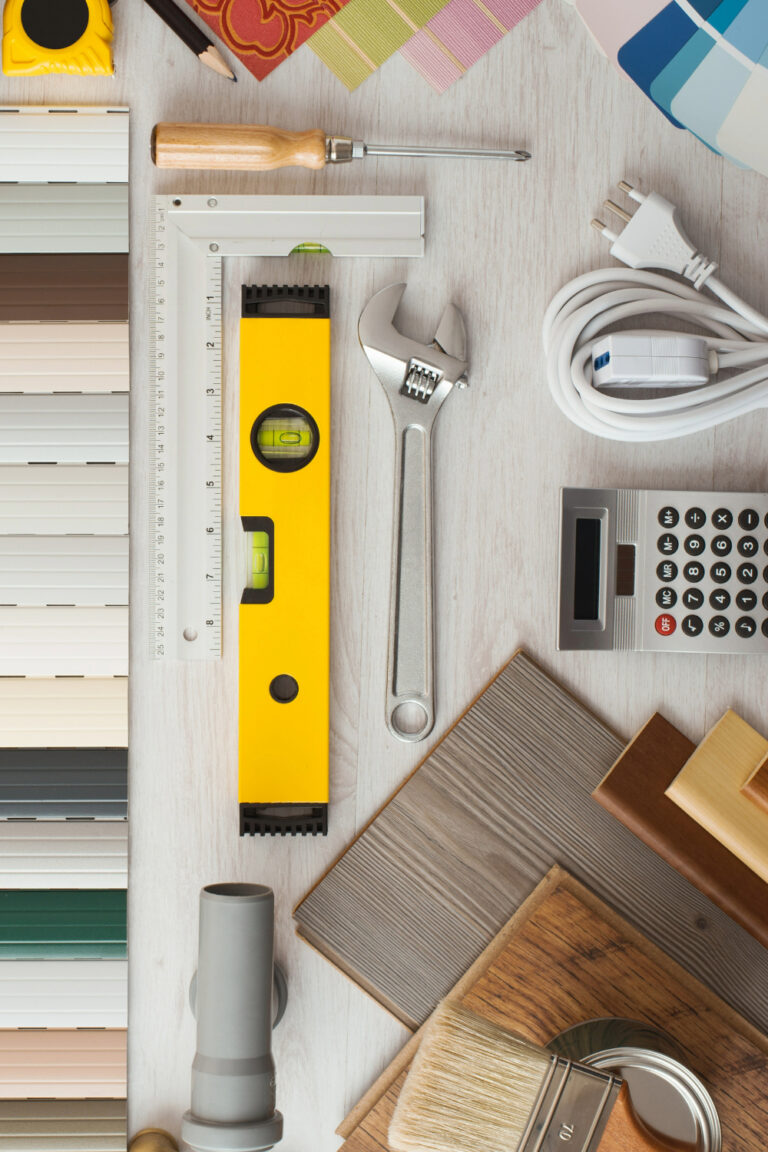Financial Guide to Renovations
Creating a budget and sticking to it is always a challenge, especially when it comes to home renovations. Not to mention if it is a large-scale project that you have never done before. No need to worry though, you’ve found our financial guide to renovations where we will cover the questions that you have and feature some of our advice as professionals in real estate. Simply follow along to create your own home renovation budget that will keep you from overspending on your next remodel.
Financing Options for Renovations
First thing is first, you need to determine how you will be financing your upcoming renovations. Once you determine how much you can afford to spend, it is important that you set aside 10-20% of your available budget for unexpected expenses – yes, unfortunately renovations always come with something unexpected so it’s best to be prepared for when that time comes. Whether it be the materials sourced end up costing more than estimated, something going wrong while the work has already begun, or unexpected delays extending your renovation period. By thinking ahead of these possibilities, you know you’ll have the funds available to finish your project no matter what happens.
Pro tip: Don’t forget to budget for the small things – i.e. tape, sandpaper, hand tools, paint brushes, etc. – as they may cost the least within your renovation budget but they do add up quickly.

Financing Options to Consider
According to National Bank of Canada, there are seven different options for you to consider for financing your home renovations. See the list below to find out what the best option is for your project.
- Use Your Savings: The advantage of using your savings is that you won’t need to borrow money or use credit, so you are done paying for your renovations once the work is completed. This is an ideal option if that is what your savings account has been set aside for. It is not suggested to pull from your RRSP as anything you withdraw will be taxed. Something to think about as well, if you are earning a higher interest rate on your savings than what you’d pay on a loan, it is better to keep your savings.
- Finance Your Renovations with Your Home Loan When You Buy a House: If you are intending to buy a home that needs work done, you can add the amount you’ll need to finance the renovations into your mortgage. This option has the advantage of a generally lower interest rate spread over a longer period. If you should choose this option, you must get plans and quotes to determine the cost of the renovations – if there are any overruns that exceed your budget, you’ll have to pay for them yourself. Be sure to keep your receipts as you will have to show confirmation of the work and submit a final inspection report to your financial institution.
- Refinance Your Home: This can be a good option for you to consider if you already own a home, provided you have enough home equity (your home’s current market value minus what you owe on your current mortgage). Did you know that you can refinance up to 80% of your home’s market value? When refinancing your home, the interest rate is generally lower than other kinds of financing, and it is amortized over a longer period. Note that with this option, you’ll have to pay fees to have a notary record your mortgage refinancing.
- A Home Loan Equity Line of Credit: As opposed to a mortgage, with a credit line you don’t have to use the whole amount. You can use the credit you need, pay that back, then borrow again until you reach your credit limit without having to apply for a new loan. The interest on the credit you’ve used is the only thing you must be sure to pay every month. You can finance up to 80% of your property’s value, but at most 65% of that amount will be allocated to the home equity line of credit and the remaining 15% will be included as a mortgage, if necessary (with a fixed or variable rate).
- A Personal Line of Credit or a Personal Loan: Unlike previous options, these two don’t involve your home. They’re a great option as they are flexible and provide quick access to cash. These funds can be used for any type of project, once the credit line is approved there’s no need to prove that the work has been done. Although, should you choose these as an option, we caution that you must be disciplined and think ahead to set a repayment schedule. Note that your payments may be higher because the amortization period is shorter.
- Use Your Credit Card: Credit cards are very convenient mean of payment, and depending on which card you have, you may be eligible for discounts and rewards. You can also view your credit card as a way to cover unexpected expenditures. Just be sure to understand your interest rate and set a schedule for yourself to ensure your payments back to your card are being made.
- Look for Government Financial Assistance and Tax Credits: Some provincial governments offer financial assistance and tax credits for eco-friendly renovations, so you may be able to help your budget with these. Make sure that the financial assistance and credits are still being offered when you start your project and that you meet the eligibility requirements before allocating them into your budget.
How to Estimate Your Home Renovation Costs
It may feel tough to decide what an appropriate budget should be when thinking about your home renovations. We like to consider the value of a home when working with our clients to guide them with their budget. You should not spend more than 10-15% of your home’s value on a single room. Sure, the thought may be that the more you spend in an area the better the return should be. But if you end up exceeding that percentage, you may not actually see it add proportionate value back into your home.
Renovation Costs
As each home is different and every owner has their own choices of how to renovate based on budget, taste, and size of the renovation spaces, it is hard to give you an exact cost to look at. The age of the home to be renovated is also a factor to weigh into your budgeting. An older home you must consider the possibility of having to change the wiring, plumbing, insulation, and other features that may not be up to code. It is suggested that when looking to renovate your home that you prioritize your projects by room to build a budget for those specific spaces. But how do you know which renovations will yield the highest return on investment? Below is a table that lists the major areas in a home and their average cost to renovate:
Bathroom | $15,000-30,000 |
Kitchen | $25,000-50,000 |
Basement | $35,000-60,000 |
Patio | $15,000-40,000 |
4-Season Sunroom | $50,000-60,000 |
Garage Addition | $55,000-160,000 |
*Source: CompareHomeQuotes. These prices are not guaranteed and may vary according to several factors. Please use for a rough guide only.
Pro Tip: If you are completing your renovations in sections to accommodate a budget, be sure to think about the proper order to complete them. For example, there is no sense in buying new countertops for the time being if you know that you will be changing the floorplan in the future.
Tips to Cut House Renovation Costs
When there’s a chance to reduce your costs in life, why not take it? We want to share with you how we have saved some of our budget costs in past renovations.
- Completing the demolition ourselves: This is as long as there is no expertise required to specific demolitions, of course. If it is something like ripping up the old flooring or removing the cabinets, things that you can handle yourself, then why pay for someone else’s labour?
- Shopping for our own finishes: Contractors often charge to shop for you and sometimes markup the costs of materials. Take the responsibility into your own hands, ensuring your contractor knows that is what you want to do, and shop for yourself. Besides, what’s more fun than getting to look through all your different options to make your dream home a reality.
- Shop used: If you are in need to tools or other items that you will be using only for this project, or even materials to be used in your final product, think about the option to buy used or refurbished items where possible. A great resource to find appliances and finishes at an affordable price is the Habitat for Humanity ReStore, they have various locations across Ontario.
- Do the Painting Yourself: Painting a space can be costly if you are thinking about hiring a professional. But if you are up for the challenge, take a crack at painting your home yourself to remove that cost from your renovation budget, leaving the cost of the paint and additional materials needed of course.

Consider Your Timing
Which season that you are trying to start your renovations can affect how much you will spend. There are some renovations that must be done at certain times of the year, for example installing windows, that there’s no working around. When you are renovating your home’s interior, you have more flexibility as you can do that in any season. It is recommended that you complete interior renovations over the winter months as the weather conditions stop you from being able to complete exterior work.
Well, there you have it, a full financial guide to renovations. We hope that this helps you as you plan your next home renovation. If you need help with planning, finding contractors, sourcing materials, or anything else to do with your renovations, please feel free to contact us. We are more than happy to share our expertise and network of professionals with you. Plus, we’re suckers for a good home transformation. What can we say, it’s one of our many guilty pleasures.